Photos: DECLASSIFIED: Spying at Mach 3+: our Interview with SR-71 Blackbird
Video: A Quick Lesson: What Whites really do to Jews in Pogroms and Holocausts
Ive looked at lots of literature over the years where the Jews claim Whites are slaughtering them. They cite pogroms as a nasty feature of their past. And then some pogroms are then called holocausts. But what exactly really happens? Is there any evidence of what exactly transpires between Whites and Jews?
[This plane fascinates me. It's one of the greatest things to come out of the USA. Jan]
From the 1960s until the 1990s the US spied on whoever it liked with impunity from the snappping cameras and greedy sensors of the fastest aeroplane ever to take off from a runway, the spectacular SR-71 Blackbird. We spoke to pilot BC Thomas about life in the most exciting seat in the world.
What was the closest they got to shooting down an SR-71?
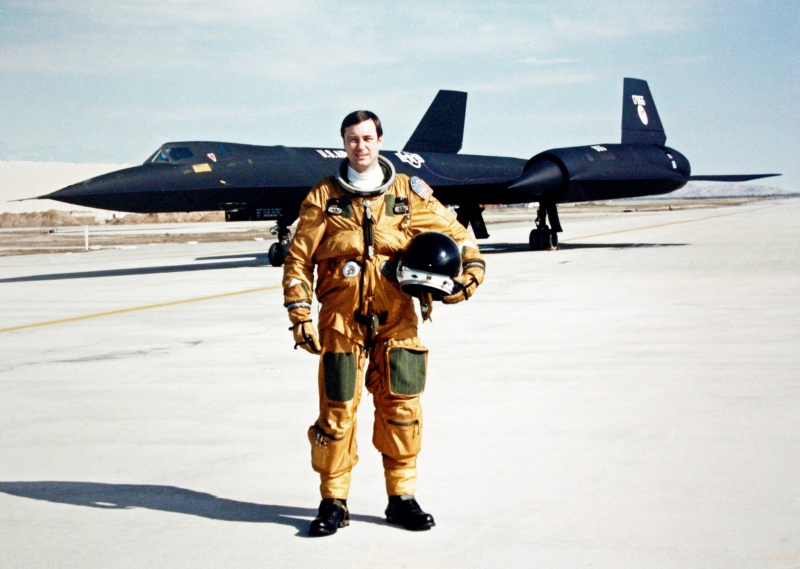
“A few miles, maybe. The last known missile launch against the SR-71 was on August 25, 1981 when Maury Rosenberg (pilot) and Ed McKim (RSO) were flying against North Korea. Maury reported that he thought the explosion was a few miles away, but judging distances 15 miles above the earth is difficult because there is nothing with which to compare.
Although the SR-71 had been attacked many times, especially over Vietnam during that war, nothing ever hit an SR-71 aircraft.”
Was the MiG-31 a real threat? What were you most worried about in terms of air defences?
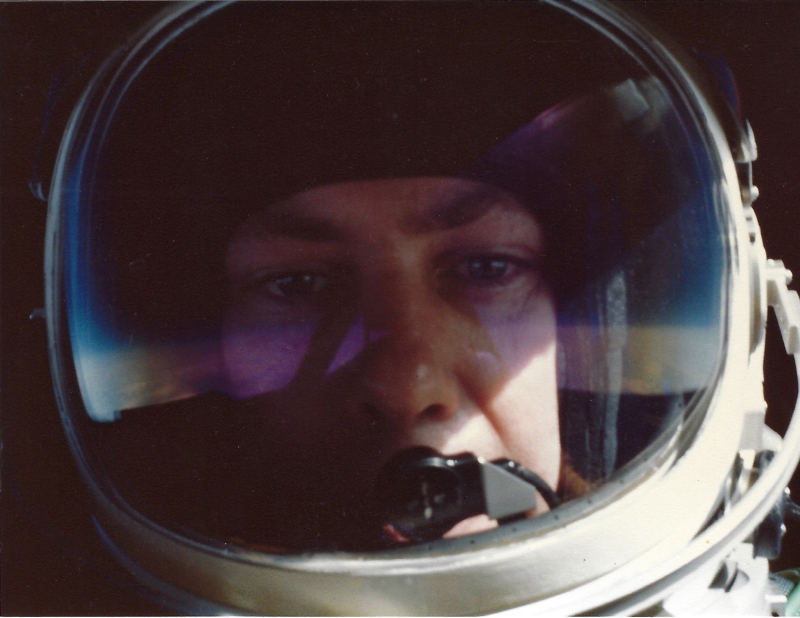
“On every operational mission, we were briefed on the latest threat assessments for both surface-to-air missiles (SAM) and potential enemy interceptors. I was more concerned about the later versions of the Soviet SA-5 SAM than any other threat. The SA-5 could reach Mach 6 (or more), so its time-to-target was relatively quick. Although our warning system would alert us of a missile launch, the time to react and maneuver our aircraft would be short.

Our defense, immediately after having a warning of a missile launch, was to electronically jam the missile’s guidance system, accelerate, climb, and perform a 45-degree banked turn away from the threat.
That procedure worked well against SA-2 missiles, which were launched many times against the SR-71 during the Vietnam War.
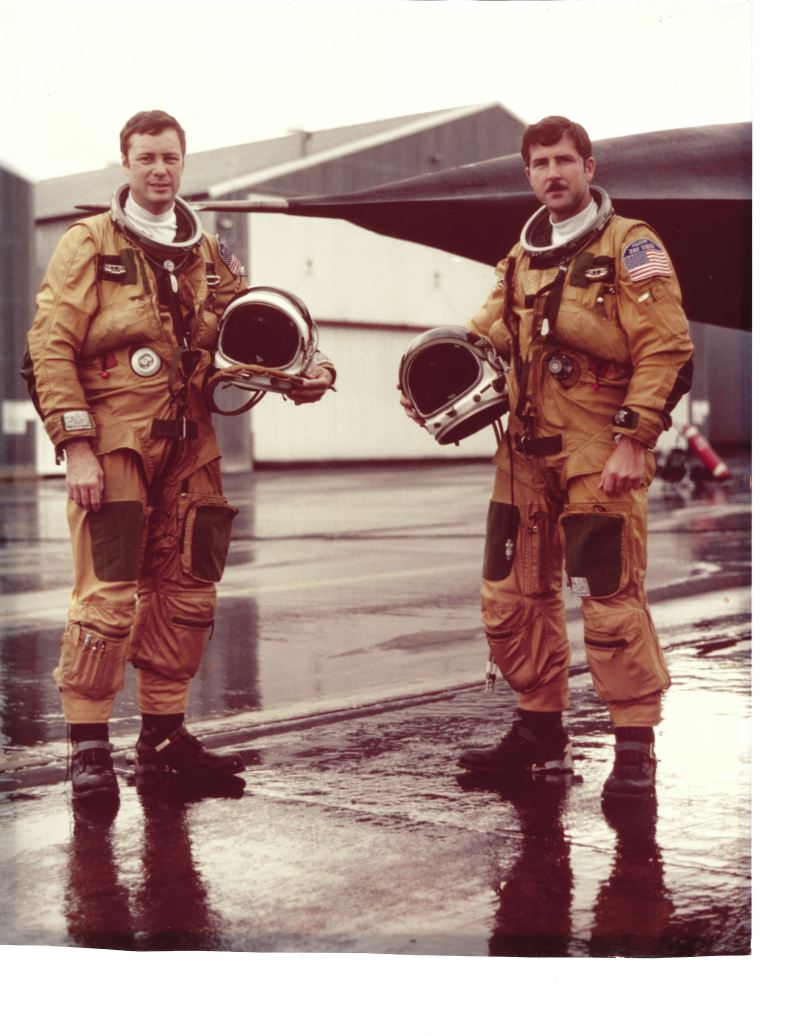
In addition to SAM threats, we were often briefed to expect interceptor activity, especially flying over the Baltic Sea or near Murmansk.
We had experience in the United States flying against some of our own Air Force and Navy interceptors and always, without knowing in advance our course, speed, and altitude, they could not be in-position and ready to fire a simulated anti-aircraft missile successfully.
We believed that without advanced knowledge of our flight path, the probably of a successful intercept was low. There was no procedure or requirement for us to identify or monitor potential interceptors in-flight, so almost all of the crew’s attention was directed to the normal mission responsibilities that we had for any reconnaissance mission. Often we would see contrails which we thought to be fighter aircraft practicing zoom maneuvers to reach our altitude, but I never saw an aircraft close enough to identify it.
I did not consider any Soviet interceptor aircraft to be a reliable threat. Our flying certainly was not hazard-free, because there is always that “lucky” shot. In general, when I was flying over a denied area, I was concentrating on flying the airplane and not concerned about interceptors.
Follow my vapour trail on Twitter: @Hush_kit
Even with a “lucky” intercept, which would be very difficult at our speed and altitude, we were briefed that their missile capability and fusing had very low chance of success.
In any case, we were expected to fly our missions as directed, no matter what the perceived threats may have been. And we did.”
Interview with pilot of the Mach 2.8 Russian MiG-31 interceptor here.
What did the Blackbird offer that satellites could not?
“During the time that the SR-71 was operational, reconnaissance satellite coverage was not 100% over important, selective targets. We, and the Soviets, knew when certain satellites were overhead, so we could cover and/or hide classified equipment so that it could not be seen by the others’ satellite imagery. This gap in observation gave the US an advantage, because the SR-71 could be in position to take pictures (or image by radar) at any specified time; thus in the vernacular, we sneaked up on the Soviet Union or China, or North Korea, or Cuba, or any other target country in the world. We would image what we were assigned anytime, day or night, in good weather or bad. It was a very flexible reconnaissance tool.”
What is the highest and fastest you’ve flown?
“While at Beale AFB, I flew no faster than Mach 3.25. While testing new systems and equipment in the SR-71 at Edwards AFB, we flew almost all missions at Mach 3.2, which was the highest Mach that was attained on the vast majority of operational missions. For some test flights, like testing the Digital Automatic Flight and Inlet Control System (DAFICS) we tested the full flight envelope to Mach 3.3, which is the fastest I flew the Blackbird.
The highest altitude I reached was 86,000 feet while flying a Murmansk mission. I had to fly that high so that I could keep the speed at or below Mach 3.2 (my target speed) while in minimum afterburner. We were never power-limited and most high-Mach cruise missions were flown with the throttles below half-travel within the afterburner range.”
Tell me something I don’t know about the aircraft.
“Perhaps the extent of the ground training we had before our first flight and for recurring training throughout our time flying the SR-71, but that is not airplane specific. For the airplane, I will tell you what two aspects of the aircraft most surprised me.
The astro-inertial navigation system (ANS), once aligned, could automatically track 61stars from a catalog, identifying their position, and through a complicated algorithm, quickly compute the aircraft’s altitude, attitude, speed, ground track, and continually update the aircraft’s position while directly controlling the aircraft’s ground track (if engaged by the pilot) and providing automatic pointing and control of the cameras and sensors. Even at maximum speed, the ANS could provide course guidance within a quarter of one mile. Unbelievable technology before the advent of the Global Positioning System (GPS).
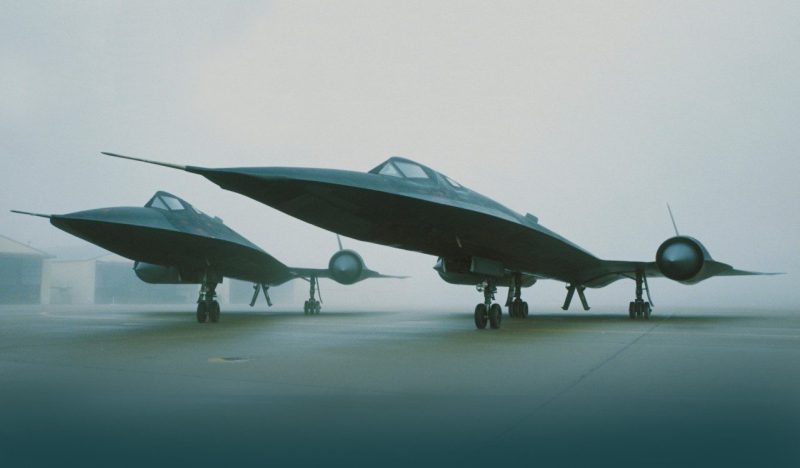
I knew that the faster an aircraft flies, the warmer it becomes, relative to the outside air temperature, but I was quite surprised how hot the aircraft would be at Mach 3 and above. The temperature rise is due to air friction; i.e., each air molecule, when hit by an object traveling around 2,000+ mph, causes an immediate and dramatic heat rise, the rise being a function of the square of the velocity, like the kinetic energy formula KE = 1/2 (mass) times velocity-squared. Bottom line: the temperature of the windshield only 2.5 feet from my face would be 621 degrees F, which is approximately the temperature of an oven during the cleaning cycle. This was one of the greatest challenges to the designers of the SR-71: to keep the cockpit, mission bays, and tires, cool enough. Other problems: invent fuel, hydraulic fluid, sealants, and oil to withstand that kind of heat for hours at-a-time and remain functional.”
What is the greatest myth about the SR-71?

“There were so many. The most outlandish myth is that we could fly in space, or even orbit the earth.
Other myths include: crew members had to be married because we would be more prone to defect to the Soviet Union if we were not. That one really torqued my jaws! Crew members did not have to be married (some were not), and the notion that any pilot or RSO would ever defect to an enemy country for any reason was both ridiculous and insulting!
Or that we could outrun a missile. We could not outrun the SA-5 for instance, but we had a very reliable warning system which could tell us if a missile were launched against us. Our evasive actions were to immediately electronically jam the guidance system of the missile, accelerate to maximum speed, climb, and turn away from the attack using 45 degrees of bank. A missile traveling fast and having very limited control over its flight path could not out-turn us.”
What was your most memorable mission? And why?
“When the consequences of one particular flight might have started a war.
The background for this flight began on November 13, 1980 when Jay Reid (RSO) and I flew a reconnaissance mission against North Korea. This was just after President Reagan was elected, and North Korea was sending a message to the new, incoming administration that our flying reconnaissance near/over their territory was unacceptable. The Communists sent this message the next day specifically mentioning our flight:
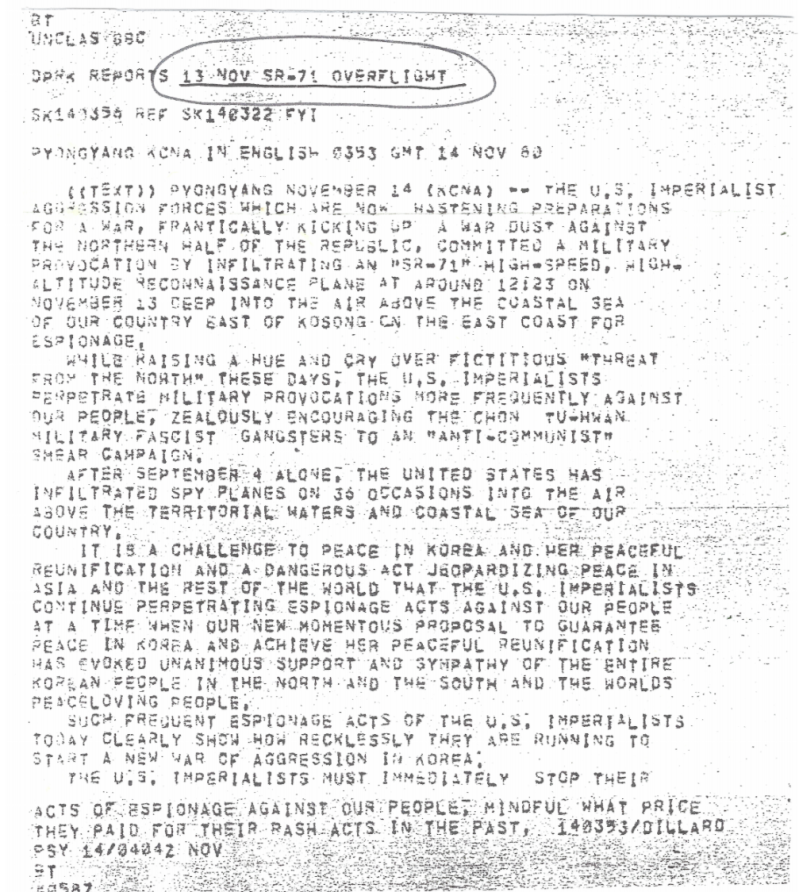
Obviously the North Koreans were not happy about our persistent and repeated reconnaissance flights against them.

We, the SR-71 crew members, thought it was great to receive such a tirade from the North Koreans. We knew that we had negatively impressed them with our surveillance flights, that they knew we were there, and there was very little they could do about it except write such obvious and typical Communist propaganda screed. We had a few laughs and a round of cheer was in order.
Very little was heard from them until August 25, 1981. Maury Rosenberg (pilot) and Ed McKim (RSO) were flying a 2-loop (our moniker for a mission involving two refuelings) reconnaissance mission, first against Communist China and then North Korea. The pass across North Korea was along the Demilitarized Zone (DMZ) between North and South Korea, although North Korea claims sovereignty over South Korea as well. On the second pass, the North Koreans launched a surface-to-air (SAM) SA-2 missile in an attempt to shoot-down the SR-71. They missed by several miles.
Jay Reid and I were at RAF Mildenhall when this happened, and we pilots and RSOs were given a detailed briefing about the incident. Our reaction was not to be very concerned about their ability to hit us, but speculate what change it might portend for future missions. Perhaps we would fly deep into North Korea’s territory, fly more often at night, or increase our sortie rate. In any case, we figured that something would change as a result of their belligerence.
About a month later, on September 24, 1981, Jay and I arrived in Okinawa to start a regular 6-week deployment. Two days later, the Assistant Secretary of Defense, Mr Frank Carluci, came to our detachment (Det 1, 9SRW) to inspect our SR-71 operations. Since Jay and I had been on the island only 2 days (we were not allowed to fly until we had been jet-lagged-acclimated for 3 days), we were designated his briefing officers specifically to show him our airplanes and answer all questions he might have. Part of our briefing included showing him the SR-71, putting him in both cockpits, and giving him an overview of our mission procedures. We especially emphasized the unusual aspects of the aircraft, including the unique controls for the engine inlets, and the defensive and navigational systems. He expressly asked us about the pilots’ and RSOs’ attitude about flying operational missions, especially in light of the attempted shoot-down. We assured him that we were all dedicated to those missions and that the prospect of another missile attack did not particularly bother us because we had ultimate faith in our defensive equipment and our ability to maneuver.
Mr Carluci specifically stated that President Reagan was “furious” that the North Koreans fired on one of our aircraft and that something would be done about it. In the meantime, we were to fly our reconnaissance missions 30 miles south of our normal flight paths.
Ten days later, on October 3, 1981, the US Air Force Vice Chief of Staff, General Robert Mathis, came to Okinawa and briefed the SR-71 crews on the plan to resume normal operational flights.
He said that soon, we would fly a mission exactly like the one flown when the missile was launched at Maury and Ed. He said also that the timing would be critical and that we had to be over the North Korean missile-launch point within one minute, although we should be within 30 seconds if possible. He emphasized the timing was important because if the North Koreans fired another missile at us, US Air Force fighter aircraft would launch an air-to-ground missile attack on the North Korean launch site immediately.
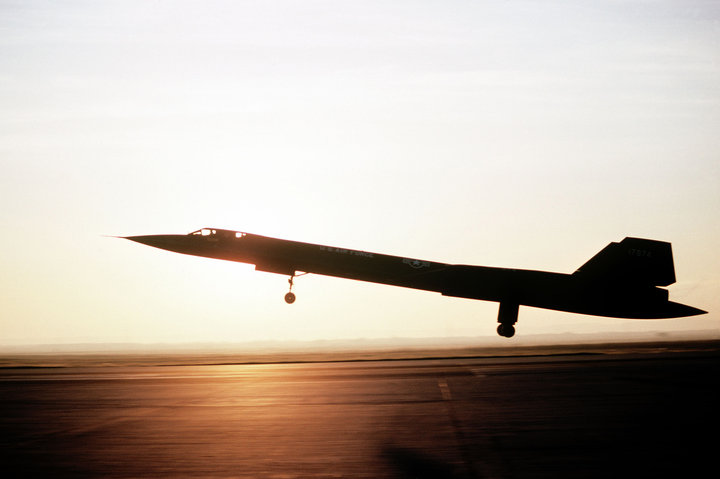
Jay Reid and I flew that mission on October 26, 1981. We took off early, used “timing triangles” to refine our time-over-target, and passed over the launch site within 10 seconds of the critical time. We took a great deal of pride in successfully flying that mission as planned, and in making a very strong statement that we, and by extension, the United States, would not be deterred.
The North Koreans did not fire at us, and I’ll admit that I was a little disappointed, for our reaction would have certainly demonstrated our National resolve. And I don’t like Communist governments either!”
Obviously smitten by our flight and perhaps trying to bluster their way out of an embarrassing situation, the North Korean Communist government issued yet another propaganda blast. This is the message:
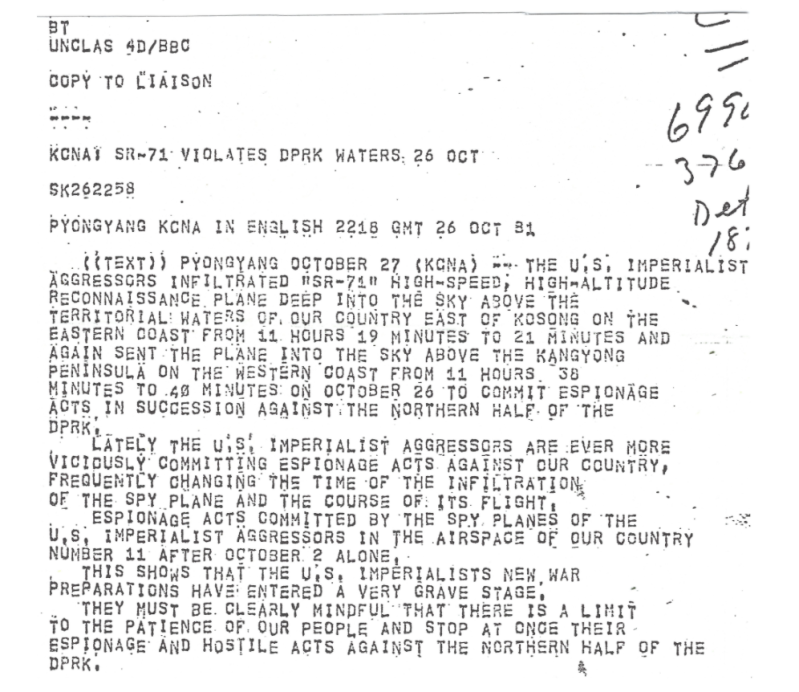
We didn’t follow the Communists’ advice and our reconnaissance missions against North Korea continued unabated.
Another significant mission for me and Jay Reid was the time we were forced, because of an aircraft emergency, to land unannounced in Continental Europe (Norway) with highly classified mission materials in the SR-71. “
In what way was flying it different from other aircraft?
“Basically all airplanes fly the same. That may sound strange, but the 3 – dimensional maneuvering of any airplane demands control of left-right, up – down, and fast-slow. Different aircraft have various ways to achieve these movements, but usually to the pilot, control of the aircraft simply comes down to the cockpit controls and how easy or difficult they are to effect the desired performance. The SR-71 had a ‘heavy’ control-stick gradient in pitch, and it was a delicate airplane because of its structural limitations. It weighed 60,000 pounds empty, but carried 80,000 pounds of fuel, which was distributed along its long fuselage length. Since fuel was carried in tanks fore-and-aft of the center-of- gravity (cg), The structural strength was relatively low and the weakest point was at the junction of the delta wing and the forward fuselage. In general, the SR-71 was limited to 1.5 g and 45 degrees of bank while flying Mach 3 and greater; 2 g between 64,000 and 80,000 pounds of fuel; 2.5 g below 64,000 pounds of fuel; and 3.5 g at low altitude (below 50,000 feet) and less than 30,000 pounds of fuel.
It was never power limited in its normal flying envelope because the engines were more powerful than needed at any normal flight condition: the flight envelope was limited by heat, dynamic pressure, and structural strength.”
What was it like to put on the suit and wear it for long periods?
“We wore pressure suits, which were the same “space suits” used by the Space Shuttle astronauts. It weighed about 30 pounds and was 5 layers of material. We also wore a helmet which attached to a neck ring on the pressure suit. It weighed about 12 pounds and could rotate on the neck ring through a system of ball bearings. The suit could be partially inflated while flying, and that would relieve some of the weight of the helmet on my shoulder. It was air-tight when fully inflated, but normally air could circulate throughout the interior of the suit to keep the pilot and Reconnaissance Systems Officer (RSO) somewhat comfortable. Some persons had difficulty getting used to wearing it, because it could engender a feeling of claustrophobia. I never had that problem. One large disadvantage however, is that a person wearing a pressure suit is isolated from his own body, and that was my first impression of a potential difficulty: as soon as I lowered my visor, which was never raised again until the aircraft was below 10,000 feet after the mission was completed, something on my face would itch. This happened on almost every flight. The only way to cope with that is to ignore it, and that took some discipline to become accustomed, so that it wouldn’t become a major bother. Another problem was taking sustenance in-flight. That was accomplished by consuming ‘tube food’, which was fed through a hard, plastic straw inserted into a valve at the bottom of the helmet. Awkward at best!”
Dear reader,
This site is in danger due to a lack of funding, if you enjoyed this article and wish to donate you may do it here. Your donations keep this going. Thank you.
Follow my vapour trail on Twitter: @Hush_kit or YouTube
Were Soviet defences always aware of your presence?
“We knew that Soviet monitoring ships around Kadena Air Base, Okinawa, were taking note of our departures, but we conducted our operations to minimize that possibility. Our operational missions were classified, so we did not advertise when we would takeoff or where we were going, and some of our missions were conducted “radio silent” and un-refueled so we made no outside transmissions at all; we called such flights “rocket rides.”
“At times, flying over the Barents Sea in the vicinity of Murmansk, which was one of our primary missions, we could, by seeing through our periscope, that we were laying down a contrail, because the outside air temperature was much colder than the standard -56 degrees C. Certainly in those cases, they could see that we were there. We also knew that they were electronically monitoring us sometimes, because our defensive systems indicated so. We never over-flew the Soviet Union or Communist China, although we would fly to within 12.5 miles of their land mass. After passing our target, anyone in the vicinity would hear the rather loud and distinctive “sonic boom,” which we called the “sound of freedom,” but by then, we were well on our way out of the area.”
What were your first impressions of the SR-71?
“When I was a senior in college and in the Reserve Officer Training Corps (ROTC) at Southern Methodist University in Dallas, Texas in 1964, I saw a picture of the Blackbird (YF-12) shortly after it was announced by President Johnson. Being interested in aviation, wanting to be a military pilot, and anticipating being commissioned a Second Lieutenant in the Air Force, I was very impressed, and thought how wonderful it would be to fly such an aircraft.
The first time I saw the Blackbird ‘in person’ was at an air show at Carswell Air Force Base (AFB) in Ft Worth,Texas in 1966. It was parked next to the XB-70 and it was the first time that either aircraft was on public display outside of Edwards AFB. Both airplanes made a deep impression on me as both were advertised to fly in excess of Mach 3, or 2,000 mph.”
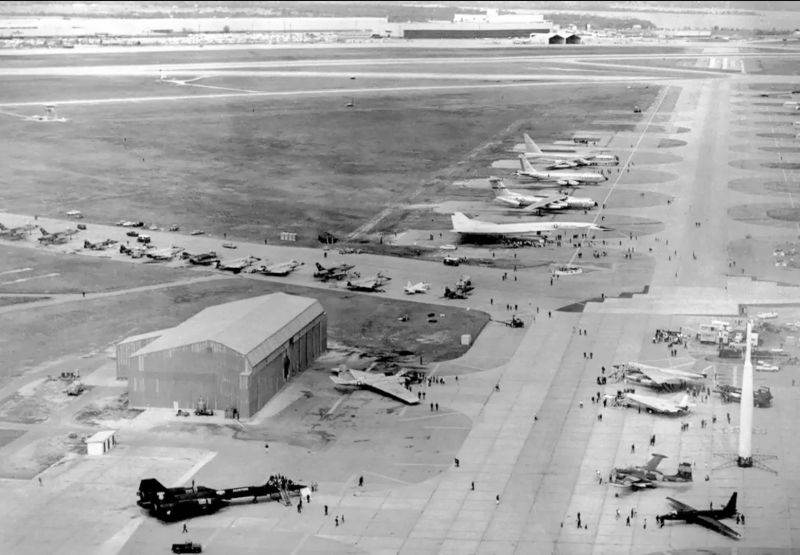
What was the best thing about it?
“The best aspect of being an SR-71 pilot was the mission, and I believe all who supported or flew the airplane operationally would agree. I was absolutely thrilled to be part of the strategic reconnaissance effort of the United States and by extension, the Free World, to survey our potential enemies and glean information that only we could provide, owing to our reconnaissance capability (sensors), and our stealth, flexibility, speed, and altitude. We advertised, that with 24-hour notification, we could be over any spot on earth, and capable to reveal what was there. That boast was successfully tested many times. And to a pilot who actively sought excitement paired with meaningful accomplishment, the notion of flying the fastest and highest-flying aircraft in the world while contributing to national security was unbeatable.”
…and the worst?
“The worst part of flying the SR-71 was the environment in which we flew. We flew fast and high, which complicated controllability and made over-controlling very dangerous because the SR-71 was delicate and not very maneuverable as compared to other high-performance fighter aircraft. At Mach 3 and above, which were our usual cruising speeds, our acceleration limit was only 1.5 g, or 45 degrees of bank because of structural heating. We also operated in near-vacuum, where the air pressure was about 0.4 pounds-per-square-inch (psi), and if we were unprotected, our blood would boil and death would be instantaneous.
To achieve enough dynamic air pressure to sustain lift, we had to fly fast, when air friction caused the average skin temperature of the aircraft to be 600 degrees F. The afterburner section was over 1,200 degrees F. We cruised at 15 miles above the earth so any cockpit environmental problem, such as high temperature, low pressure, or oxygen depletion, could be fatal, because slowing down and descending could not be achieved quickly.”
What was a typical mission?
“Almost all flights, training or operational, followed this general schedule. We would meet for mission planning the day before the flight to study all of the parameters of the flight, which included its route, what sensors would be carried, when and how to operate them, identify all potential alternate landing sites, check weather and, for operational missions, any political and intelligence information affecting the mission. Detailed mission planning required advance knowledge, annotating exactly every “action point.” These points include where refueling would take place, the call signs of all tankers, the altitude and length of the air refueling track(s), any in-flight timing which must be met, when/where the supersonic acceleration would start, every turn while flying supersonic, the points at which specific alternate airfields would become primary, the time and position where sensors (cameras, radar imaging, other electronic devices) would be turned on. The fuel at each such point would be estimated for in-flight correlation and cross-check.”
“On the day of the flight, two hours before take off, we would pick up any classified material we would use in-flight, including our aircraft checklist and mission checklists. We would then report to Base Operations for a weather briefing to cover our entire route, and check the latest Notice to Airmen (NOTAMs) for each potential alternate airfield. Our next stop would be the Physiological Support Division (PSD) where we would meet with our backup crew, who were also the Mobile Crew, whose duty was to preflight our cockpit and coordinate everything for us since, being in pressure suits, our ability to travel and talk to other persons was limited . We also met the SR-71 maintenance crew chief who briefed us on the status of the airplane and signed the aircraft maintenance log book. We usually were given a high-protein, low-residue meal of steak and eggs. At Beale AFB, the same person would act as chef for us so our steaks were cooked to perfection, according to our individual taste.
We would next have a physical exam which always included pulse, blood pressure, sinus, and temperature. Then we would don our pressure suits, which required two persons each to help us into the suit, and two supervisors to assure that everything was properly connected and tested real-time. That process took about 20 minutes. With portable air-conditioning units, we would make our way to the PSD van and be driven to the SR-71, usually located in its own hangar. Last-minute cockpit checks, starting engines, performing more checks with the engines running, taxiing to the active runway and performing more engine checks at 100% rpm took about 30 minutes. The mobile crew would drive down the runway to check for any foreign objects which might either be ingested into the engines, or damage the tires.
Read ‘My fight with secret MiGs’ by an F-15 Eagle pilot here
We would then be cleared for takeoff at a pre-determined time. About 15 seconds prior to that time, I would smoothly, but deliberately advance the throttles to Military power (MIL) which is 100% rpm on both engines without afterburner (reheat). Brake release was done precisely at takeoff time and the throttles were immediately advanced to the minimum afterburner position. When both burners ignited, hardly ever at the same instant, I would advance the throttles to maximum thrust, which was about 68,000 pounds of thrust at sea-level. Acceleration was quick, takeoff distance was about 4,500-5,000 feet in 25 seconds. Rotation accomplished at 180 knots with takeoff at 210 knots. I would keep the aircraft low to the runway to gain climb speed as quickly as possible; however, approaching the gear-down limiting airspeed of 300 knots, I often would either increase pitch or retard the throttles slightly to avoid overspeed. By the departure end of the runway, we would attain climb speed of 400 knots, then raise the nose to about 23 degrees of pitch to continue the climb. Rate-of-climb would sustain about 12,500 feet-per- minute until reaching our intermediate altitude of 25,000 feet above Mean Sea Level (MSL). Brake release to 400 knots was about 34 seconds; time to reach 25,000 feet was about two minutes.”

“On most missions, we would takeoff with about 40,000 pounds of fuel, which was half of the fuel-tank capacity. This was for safety because in the event of an engine loss immediately after liftoff at 210 knots, our single-engine minimum control speed would always be met, whereas if we were full, our minimum control speed would be closer to 330 knots.
After initial level-off I would hand-fly the airplane, checking its response, and testing its stability augmentation system in all three axes: yaw, pitch, and roll. I would also check all of the instruments for this first-look while flying. The RSO would start radio contact with the tanker aircraft by inserting a common frequency into a classified UHF radio. This special radio would provide us with secure voice, plus range and azimuth to the tanker. The RSO was busy checking out his sensors and navigational system. We would rendezvous with the tanker at approximately 320 knots indicated air speed (KIAS), with the SR-71 level at 1,000 feet below the tanker. I would maintain a 100 KIAS overtake until I was 1.5 miles from the lead tanker (we usually had 2 tankers in case one could not transfer fuel). After hookup and while receiving fuel, the tanker would accelerate as its gross weight was reduced and ours increased. Usually, the tanker’s maximum airspeed was 350 KIAS, but since the KC-135Q had special dispensation, we would often accelerate to 365 KIAS by the end of air refueling.
We would almost always refuel to full tanks (80,000 pounds of fuel) so that our gross weight would more than double during air refueling. The SR-71 had a problem staying in position near the latter portion of the refueling: as our gross weight increased toward maximum, we would become power limited without afterburner assistance because by that time, we were operating “behind the power curve,” where more power is required either to slow or speed-up while maintaining level flight. I found the best technique for maintaining position was to notify the boom operator that I was going to light an afterburner (I never wanted to alarm the boom operator), then place the left throttle in the minimum afterburner position, wait 3 seconds, then smoothly retard the right throttle about 4 inches. The SR-71 would hardly move relative to the tanker.
After receiving our full on-load of fuel, we would usually start to climb and accelerate to supersonic speeds immediately. Selecting maximum thrust (throttles in full afterburner), we would achieve .9 Mach while climbing to 35,000 feet, when I would slowly lower the nose to about -10 degrees of pitch to “punch through” the sound barrier, which was a region of high drag. After achieving supersonic speed at 450 knots, I would increase pitch to hold that speed. Once supersonic, we would monitor Knots Equivalent Airspeed (KEAS) as our primary instrument to determine overall dynamic pressure acting on the airplane. KEAS is a direct measurement of the amount of wind blast (dynamic pressure) the aircraft is experiencing. This is the air pressure which the aircraft needs to maintain flight (lift) and adequate controllability. During the climb/acceleration, there are numerous systems which must be controlled as the aircraft accelerates faster toward its cruising speed, which was usually Mach 3, or approximately 2,000 mph. Other cruise speeds used were Mach 2.4, 2.8, 3.1, 3.15, and 3.2.
After attaining our cruise Mach speed, we would initiate about a 200 foot-per-minute rate-of-climb to continually achieve the best altitude for maximum range through a cruise-climb schedule, as our fuel burned off and our gross weight decreased. We would often cross-check our gross weight, outside air temperature, Mach speed, center-of-gravity, and load factor (bank angle) with our checklist chart to verify and maintain the proper altitude for best fuel economy. Flying at best range speed (Mach 3.2) and maintaining optimum altitude continually throughout the flight, we could easily fly more than 2,000 miles and still have fuel to descend, fly subsonic for 25 minutes and land safely.
For all missions, we had to maintain our flight track as planned, and this was particularly important for operational missions where we sometimes had to fly within one-half mile of our planned track to satisfy our mission objectives. These restraints might include skirting the international border of a target country, or being in the correct position to obtain certain photographic targets.
Flying supersonic over the United States, we were constrained by where our “sonic boom” would touch the ground and be heard, and to minimize citizen complaints, we would fly over relatively unpopulated areas in the western United States, or over the Pacific Ocean.
Every training sortie was flown to operational-mission specifications. The pilot was busy monitoring all of the myriad instruments in the cockpit relating to the aircraft performance, course maintenance, and temperatures in the mission bays where the reconnaissance equipment was carried. Aircraft pitch-control was sensitive and necessary to maintain, because at Mach 3, one degree of pitch change would yield 3,000 feet-per-minute rate-of-climb or descent.
We had checklists to accomplish at various points along the track and would conduct crew coordination for any unusual event, such as an aircraft malfunction or emergency situation. In the “take area” or overflying “denied territory,” our attention (especially the RSO’s attention) would include sensor operation, HF radio transmissions from interested personnel who were monitoring our progress, and monitoring the defensive equipment, which included surface-to-air missile readiness, tracking ability, and electronic jamming, if a missile launch was detected. The jamming equipment is still classified information, but it was so powerful that we were forbidden to operate it over the United States or friendly countries.
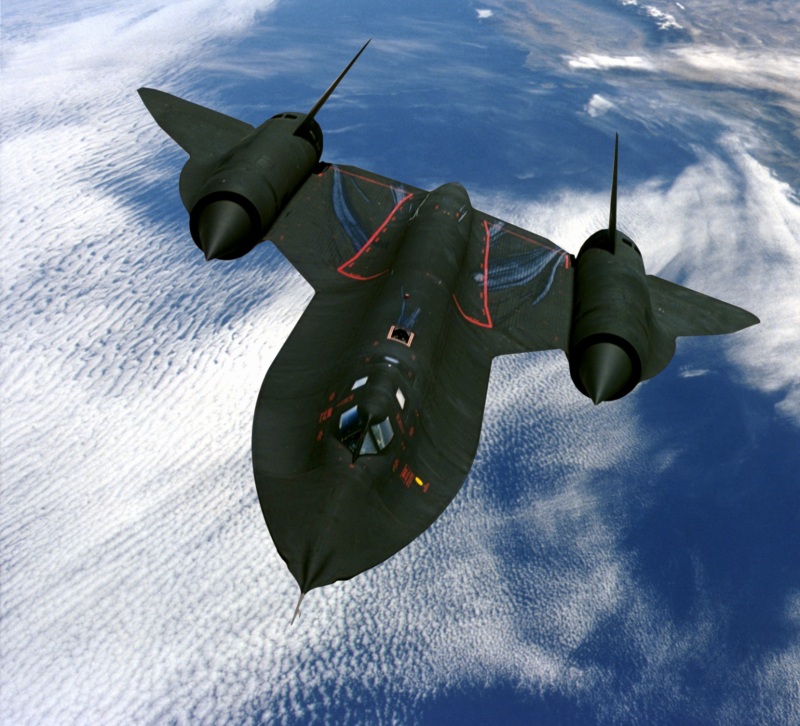
When the airborne mission was complete and we were flying back to our base, we would start the supersonic descent about 200 miles from destination. The initial descent procedure was to bring both throttles to MIL power and wait for the Mach number to start deceasing. Since Mach 3+ is a relatively low drag region for the SR-71, it would take several seconds for the Mach number to indicate a decrease. As the speed slows, we would maintain a dynamic pressure equivalent of 350 KEAS and hold that parameter until subsonic. Our initial pitch attitude starting the descent was about 11 degrees nose-up, but by the time we were approaching Mach 1.0 in the descent, our pitch attitude would be -15 degrees nose-down. This dramatic change in pitch described our “reentry.” Once subsonic, the SR-71 flew like most other high-performance aircraft with a heavy flight-control feel.
Landing the SR-71 was somewhat unique, at least in my experience flying other high-performance jet aircraft. It had no speed brakes, no flaps, no leading-edge high-lift devices, no boundary-layer control, or any other auxiliary systems to augment the “clean” aircraft. However, since it had a very large delta wing and a forward extension of the wing called the “chine,” which acted as an additional lift producer, the SR-71 had great “ground effect” which markedly decreased drag when the aircraft was approximately 50 feet above the ground. For this reason, the pilot would typically retard the throttles to idle when the aircraft was nominally one-quarter of a mile from the overrun of the runway, no wind. The landing was accomplished in separate steps: when the main landing gear touched the runway, I would pull the drag chute handle while the nose is still about 10 degrees in the air. There would be no adverse pitch change (up or down) due to chute deployment, because the location of the drag chute attachment buckle was directly over the center-of-gravity. The deceleration was approximately one-quarter g, and it felt good when the object was to stop the airplane. Then gently lower the nose wheel to the runway and engage nose-wheel steering, then check brakes. Normally the drag chute would be jettisoned on the runway, but this had to be accomplished no slower than 55 knots because otherwise, the buckle would drag over the fuselage, causing damage. Actual stopping depended on the braking system. After landing, the brakes were almost always fairly hot, requiring that gasoline-powered fans be placed around the tire-brake assembly for about 20 minutes.
On most operational missions, we would taxi into the hangar, and while going through the post-flight checks, the mission materials were downloaded by specialists using carts and high-speed screwdrivers. They reminded me of a motorsport ‘pit-stop’ crew. The film and other recorded items were processed as quickly as possible.”
The Hush-Kit Book of Warplanes will feature the finest cuts from Hush-Kit along with exclusive new articles, explosive photography and gorgeous bespoke illustrations. Order The Hush-Kit Book of Warplanes here
How good were its reconnaissance capabilities?
I was not part of that analysis; however, we were allowed to see the results of our missions: the resolution of the photographic cameras and the radar imagery. I am not a photo interpreter, but I knew what I was seeing with remarkable clarity, especially given the technical difficulties of producing useful imagery while flying 15 miles altitude at 2,000 mph and while maneuvering. They were crystal-clear.
Usually radar imagery is rather like reading code: to a trained interpreter, certain squiggles and shadows portray specific events. With the new-at-the-time Advanced Synthetic Aperture Radar System (ASARS), which was developed for the SR-71, even I could interpret what was there.
Enjoyed this Blackbird interview? Preorder your copy of The Hush-Kit book of Warplanes today here.
The first Blackbird variant, the A-12, flew reconnaissance missions for the Central Intelligence Agency (CIA) from 1967 to 1968. The SR-71 flew reconnaissance for the US Air Force from 1968 to 1990, operating for the Strategic Air Command (SAC), 9th Strategic Reconnaissance Wing (9SRW), and the 1st Strategic Reconnaissance Squadron (1SRS). It was the most expensive squadron to operate per number of air crews; there were only 10 operational crews assigned to the SR-71 at any one time. It required massive amounts of support, both personnel and materiel. I conclude that yes, the reconnaissance capabilities were superb and well worth the expense. After the SR-71 was retired, several leaders, including General Norman Schwarzkopf during the first Gulf War, asked that the program be restarted to fill a gap in reconnaissance capability. The US Navy in particular did not want the SR-71 to cease operations because of its importance, given the Murmansk missions.”
Describe the Blackbird in one word?
“Magnificent!”
Did you use any nicknames for it? “The name ‘Habu’ was also used for the SR-71 aircraft, the crews who flew her, the maintenance personnel who kept her flying, and any number of other people who worked with or for the SR-71 program. This name came into fashion early in the Blackbird’s history and was started by the citizens of Okinawa who thought the SR-71 resembled a black, venomous snake nicknamed “Habu,” which is native to Okinawa. The crews thought it appropriate, so the name stuck.
A tradition started early in the SR-71 program, that the Habu patch was worn only by SR-71 aircrew members after they had completed their first operational mission.
The other most common nickname is Blackbird. Obvious reason.”
How did you feel after your final SR-71 flight?
“I felt absolutely terrible that I was leaving the SR-71 and would never fly it again. I had the best job in the Air Force and did not have to leave when I did (in November 1987), but I was 45 years old, a graduate of the US Air Force Test Pilot School, and wanted to pursue a civilian career as a test pilot. I thought that I would have to retire from the Air Force before I would be un-marketable because of age, as most aerospace companies want to hire experienced, but somewhat young test pilots. I accepted a job with the Northrop Corporation in the B-2 program, which was anticipating the B-2 first flight within the year. It was indeed a tough choice!”
What should I have asked you?
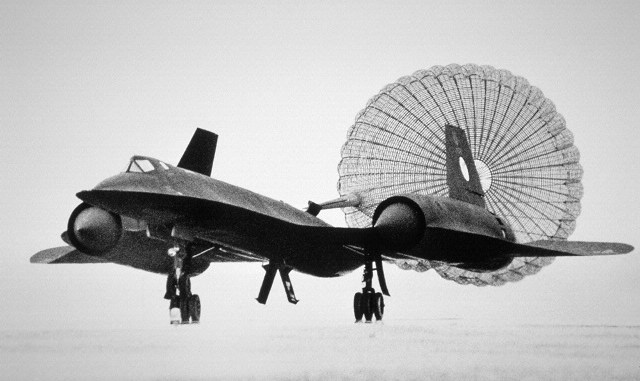
“Perhaps you should ask about the culture of the SR-71 cadre of highly motivated, professional people who all came together to make that magnificent aircraft the super-star that it was. The talent and dedication that the maintenance crews exhibited in their everyday efforts, as they often worked in 12, 16, and on deployments, 24-hour shifts. The men and women who were directly responsible for maintaining, supplying, planning, and innovating various aspects of the SR-71 program were truly outstanding. We as pilots and RSOs knew that since we flew in the most dangerous and hostile environment of any aircraft, and we did it almost daily, our lives quite literally were saved and preserved by their professional pride, dedication, talent, and very hard work. They all knew they were producing a most complicated aircraft ready to meet the challenges of sustained ultra-hot, supersonic flight in an atmosphere almost a vacuum, for the security of the United States, and also that of the greater “Free World. Magnificent indeed!
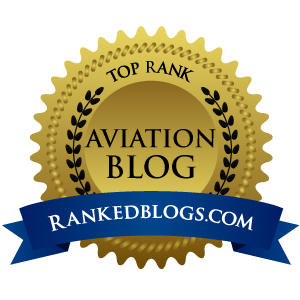
And kudos also for the faithful tanker crews who were always there to refuel us when sometimes, they were our only salvation in a very low, critical fuel state. It is instructive and significant that there was never an operational mission canceled for lack of tanker support.
And no Blackbird ever ran out of fuel!”
White Shop: Rhodesian SAS Combat Manual Paperback
The Rhodesian SAS Combat Manual is a significant historical look at the small unit tactics employed by this elite unit during the Rhodesian Bush War. Not only is it a glimpse back at how the unit operated, but a lot of the material is still relevant today for units fighting counter-insurgencies. This book covers tactical follow-ups, ambush tactics, infiltration methods and combat tracking and more!



